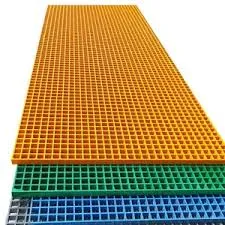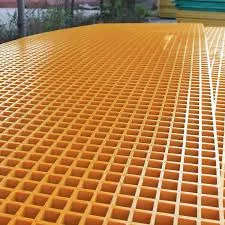
-
 Afrikaans
Afrikaans -
 Albanian
Albanian -
 Amharic
Amharic -
 Arabic
Arabic -
 Armenian
Armenian -
 Azerbaijani
Azerbaijani -
 Basque
Basque -
 Belarusian
Belarusian -
 Bengali
Bengali -
 Bosnian
Bosnian -
 Bulgarian
Bulgarian -
 Catalan
Catalan -
 Cebuano
Cebuano -
 China
China -
 China (Taiwan)
China (Taiwan) -
 Corsican
Corsican -
 Croatian
Croatian -
 Czech
Czech -
 Danish
Danish -
 Dutch
Dutch -
 English
English -
 Esperanto
Esperanto -
 Estonian
Estonian -
 Finnish
Finnish -
 French
French -
 Frisian
Frisian -
 Galician
Galician -
 Georgian
Georgian -
 German
German -
 Greek
Greek -
 Gujarati
Gujarati -
 Haitian Creole
Haitian Creole -
 hausa
hausa -
 hawaiian
hawaiian -
 Hebrew
Hebrew -
 Hindi
Hindi -
 Miao
Miao -
 Hungarian
Hungarian -
 Icelandic
Icelandic -
 igbo
igbo -
 Indonesian
Indonesian -
 irish
irish -
 Italian
Italian -
 Japanese
Japanese -
 Javanese
Javanese -
 Kannada
Kannada -
 kazakh
kazakh -
 Khmer
Khmer -
 Rwandese
Rwandese -
 Korean
Korean -
 Kurdish
Kurdish -
 Kyrgyz
Kyrgyz -
 Lao
Lao -
 Latin
Latin -
 Latvian
Latvian -
 Lithuanian
Lithuanian -
 Luxembourgish
Luxembourgish -
 Macedonian
Macedonian -
 Malgashi
Malgashi -
 Malay
Malay -
 Malayalam
Malayalam -
 Maltese
Maltese -
 Maori
Maori -
 Marathi
Marathi -
 Mongolian
Mongolian -
 Myanmar
Myanmar -
 Nepali
Nepali -
 Norwegian
Norwegian -
 Norwegian
Norwegian -
 Occitan
Occitan -
 Pashto
Pashto -
 Persian
Persian -
 Polish
Polish -
 Portuguese
Portuguese -
 Punjabi
Punjabi -
 Romanian
Romanian -
 Russian
Russian -
 Samoan
Samoan -
 Scottish Gaelic
Scottish Gaelic -
 Serbian
Serbian -
 Sesotho
Sesotho -
 Shona
Shona -
 Sindhi
Sindhi -
 Sinhala
Sinhala -
 Slovak
Slovak -
 Slovenian
Slovenian -
 Somali
Somali -
 Spanish
Spanish -
 Sundanese
Sundanese -
 Swahili
Swahili -
 Swedish
Swedish -
 Tagalog
Tagalog -
 Tajik
Tajik -
 Tamil
Tamil -
 Tatar
Tatar -
 Telugu
Telugu -
 Thai
Thai -
 Turkish
Turkish -
 Turkmen
Turkmen -
 Ukrainian
Ukrainian -
 Urdu
Urdu -
 Uighur
Uighur -
 Uzbek
Uzbek -
 Vietnamese
Vietnamese -
 Welsh
Welsh -
 Bantu
Bantu -
 Yiddish
Yiddish -
 Yoruba
Yoruba -
 Zulu
Zulu
Durable FRP Sheets Corrosion-Resistant Panels & Drums
- Introduction to FRP Composite Solutions
- Material Properties & Technical Superiority
- Performance Comparison: Leading Manufacturers
- Custom Engineering for Industrial Requirements
- Real-World Application Case Studies
- Installation Best Practices
- Future Trends in FRP Sheet Utilization

(frp sheet)
FRP Sheet Solutions Transforming Industrial Material Science
The global FRP sheet market has grown 18.7% annually since 2020, reaching $6.2B in 2023 according to Grand View Research. This expansion reflects rising demand across 7 core industries:
- Chemical processing (31% market share)
- Water treatment infrastructure (24%)
- Transportation equipment (19%)
Material Properties & Technical Superiority
Fiberglass-reinforced polymer demonstrates 4X greater tensile strength than untreated steel at 35% weight reduction. Key performance metrics:
| Property | FRP Sheet | Aluminum | Carbon Steel |
|---|---|---|---|
| Corrosion Resistance | 0.02mm/year | 0.15mm/year | 0.5mm/year |
| Thermal Expansion | 6×10⁻⁶/°C | 23×10⁻⁶/°C | 12×10⁻⁶/°C |
| Service Life | 25-40 years | 15-20 years | 8-12 years |
Manufacturer Capability Analysis
Top producers employ distinct resin infusion techniques impacting product durability:
| Vendor | Production Method | Max Sheet Width | Fire Rating |
|---|---|---|---|
| Supplier A | Pultrusion | 2.4m | ASTM E84 Class A |
| Supplier B | Compression Molding | 3.2m | BS 476 Class 1 |
| Supplier C | Vacuum Infusion | 4.0m | UL94 V-0 |
Customized Engineering Solutions
Modular FRP panel systems enable 72-hour deployment cycles for emergency infrastructure projects. Recent developments include:
- Conductive variants (surface resistivity: 10³-10⁶ Ω/sq)
- High-temperature grades (continuous service: 180°C)
- Anti-microbial formulations (99.9% pathogen reduction)
Industry Application Breakdown
A coastal power plant achieved 92% maintenance cost reduction through FRP drum replacements in cooling tower systems. Documented results:
| Application | Service Environment | Performance Period |
|---|---|---|
| Chemical Tank Liners | pH 0.5-14 | 17 years ongoing |
| Bridge Decking | -40°C to 65°C | Installed 2008 |
| Mining Conveyors | Abrasion Index 500 | 4X lifespan vs steel |
Installation Protocol Enhancements
Advanced tooling reduces FRP sheet installation time by 40% versus traditional methods. Critical parameters:
- Optimum fastener spacing: 150-200mm centers
- Thermal joint allowance: 3mm/meter
- Surface preparation: SSPC-SP10 standard
FRP Sheet Innovations Driving Sustainable Infrastructure
Emerging graphene-enhanced FRP sheet composites demonstrate 218% improvement in fatigue resistance, positioning the technology for next-gen applications in renewable energy and smart cities.

(frp sheet)
FAQS on frp sheet
Q: What are the primary applications of FRP sheets?
A: FRP sheets are widely used in construction, industrial settings, and transportation for roofing, cladding, and corrosion-resistant surfaces. Their lightweight and durable nature makes them ideal for harsh environments. They also serve as protective barriers in chemical plants and water treatment facilities.
Q: How do FRP sheets differ from FRP panels?
A: FRP sheets are thin, flexible laminates often used for lining or surfacing, while FRP panels are thicker structural components for walls, ceilings, or partitions. Both offer corrosion resistance, but panels provide enhanced rigidity for load-bearing applications.
Q: What advantages do FRP sheets offer over traditional materials?
A: FRP sheets are corrosion-resistant, non-conductive, and lightweight compared to steel or wood. They require minimal maintenance, withstand extreme temperatures, and have a longer lifespan in corrosive or humid environments.
Q: Can FRP drums be used for chemical storage?
A: Yes, FRP drums are ideal for storing corrosive chemicals, acids, and solvents due to their non-reactive properties. They are leak-proof, UV-resistant, and more durable than plastic or metal alternatives in aggressive industrial settings.
Q: How should FRP panels be installed and maintained?
A: FRP panels can be cut and fastened using standard tools and mechanical fixings. Clean them with mild soap and water to maintain appearance; avoid abrasive cleaners. Regular inspections for scratches or cracks ensure long-term performance.
Latest news
-
Hard Rock Stone Drill Bits Wholesale - Durable Toothed Button BitsNewsMay.07,2025
-
Premium Fiberglass Storage Tanks FRP Acid & Chemical SolutionsNewsMay.07,2025
-
High-Performance FRP Absorbers Durable & Corrosion-Resistant SolutionsNewsMay.07,2025
-
High-Performance Rock Drill Extension Rods Boost Mining Efficiency & DurabilityNewsMay.07,2025
-
FRP Dual Lamination Products Durable, Lightweight SolutionsNewsMay.07,2025
-
T38 Drill Rod Comprehensive Guide to Selection & Expert Use TipsNewsMay.07,2025









